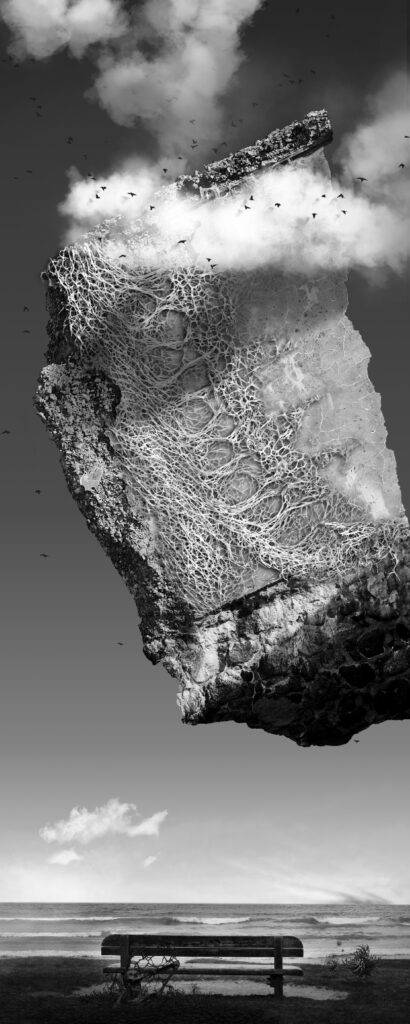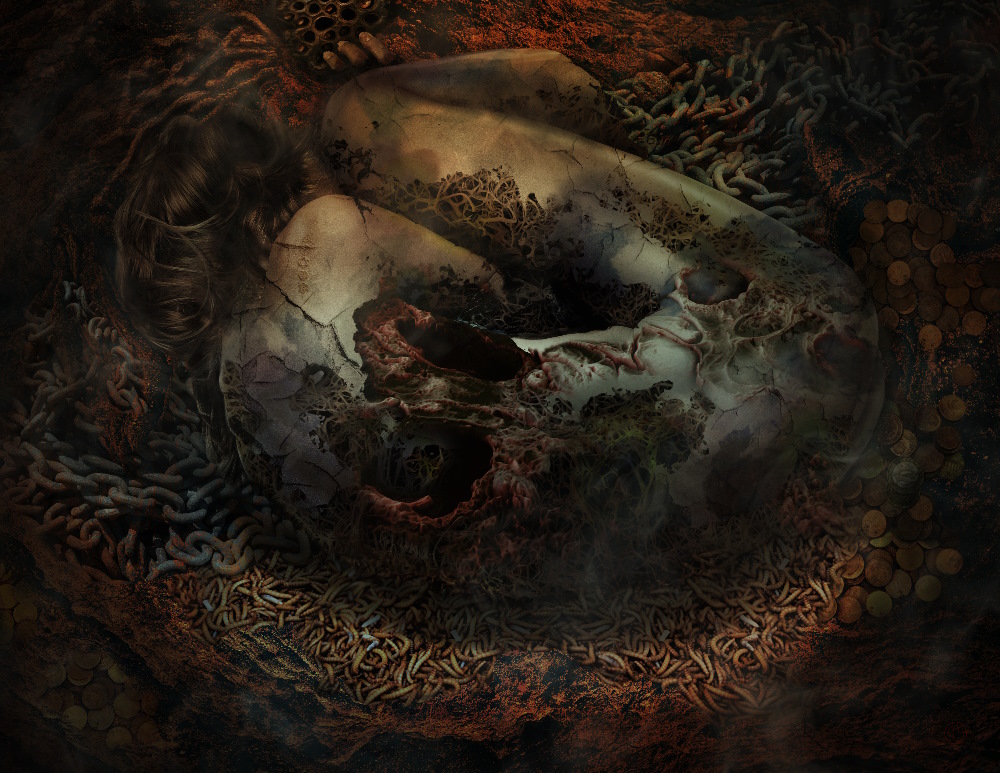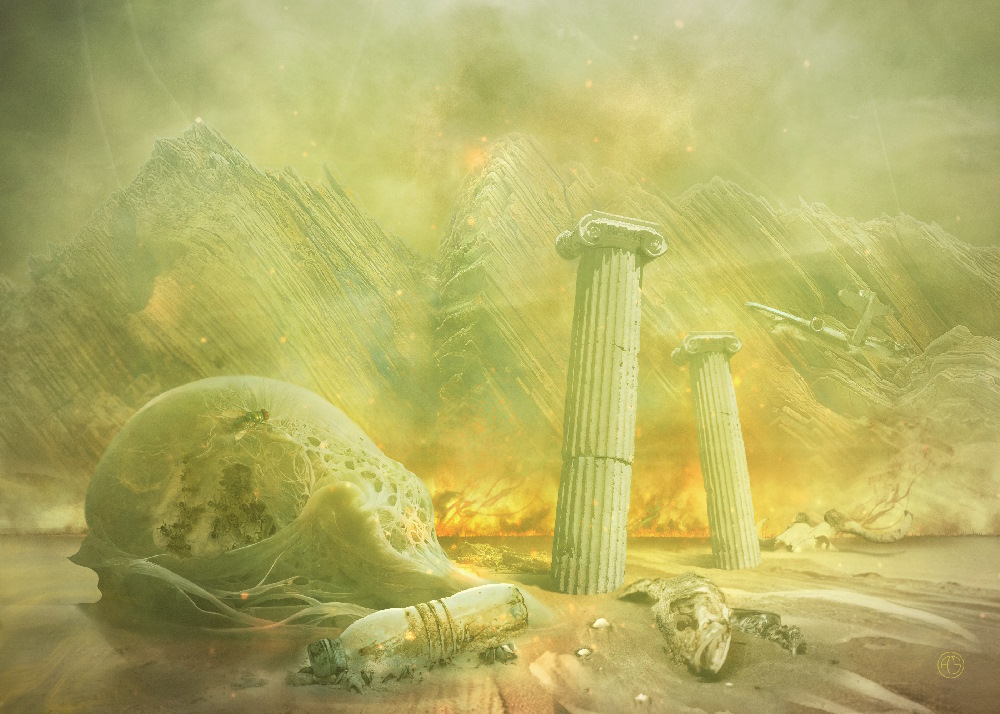Memorial Bench (2024) is a photo montage in which a bench sits at the bottom of the work with a floating giant rock with what looks to be a fossil within it above the bench. The environment in which these two objects sit within looks desolate yet quite peaceful at the same time. The background seems to have an ocean while the bench looks as though it is slightly weathered. From this we could dissert that the bench could be a memory of the past itself as it seems damaged.

Going further into the mystery of the bench, there are skeletal remains tangled within the soil next to it, which could imply that the memorial bench is a memorial to humanity. The ocean is mostly calm, with occasional waves, along with mostly clear skies. Pairing these elements together gives the scene an eerie and existential sentiment.
Above the bench is the rock formation, and its texture suggests that there is both natural erosion and its formation is also of artificiality. The webby texture of the rock could also be linked to the human body as they look to be veins or neurons. In which neurons within the brain hold memories, which seems to be a memorial to humanity.
The description of the work “a memorial to an extinct species” amplifies this idea of existentialism of humanity and our causation of our extinction, through possibly environmental issues created by us. The bench has thus become a place of reflection for the actions humanity has caused as it is in a very meditative area. While the fossil rock could be our cause that we have destroyed the world. The webby veiny texture, as mentioned before, could also be of the body but also of the lifeforms our existence has destroyed.

The Last Supper (2024) is a critique of capitalism. It portrays the excesses of consumption and how this excessive consumption leads to the destruction of society itself—thus, it is the last supper of capitalism. The framing of the scene is entangled with numerous chains, which imply the exploitative and slaving nature of capitalism. The image it frames seems to be in a foetal position and looks as though it is rotting.
The figure in the centre has cracked and decaying skin that seems to resemble both marble and decomposition. Marble is often considered an opulent material, and with its cracks, it showcases the collapse of capitalism’s decadence and excesses. There are web-like and veiny formations on the body. Furthermore, along with the chains, there are maggots within the framing of the framework composition of these elements within the work, creating an unsettling and morbid scene.
The work’s title, “The Last Supper”, parallels the Biblical story of the Last Supper, which explores sacrifice and betrayal. However, the work- is not divine but rather grotesque and morbid, exploring capitalism’s final moments as it devours itself. The human figure, or foetus, has become the consumer, and the consumed implies the self-destructive nature of the system, which is caused by unchecked greed. The chains and the coins surrounding the figure also suggest that it is enslaved to the system and cannot leave- while the worms may assert that the system is insignificant when facing the reality of life as capitalism kills the planet.

Sold Down the River (2024) suggests the aftermath of the oil and gas industry in a very destroyed landscape. The environment in the photo montage is extremely degraded, dystopian, and dead. Thus, the artwork serves as a criticism of fossil fuel corporations and the ever-encroaching greed of the capitalist system.
The work is covered in a green and noxious atmosphere, while the foreground comprises two classical columns and other ruins. The columns could be a metaphor for the collapse of civilisations (as had happened before with ancient civilisations). Humanity’s presence is now left to erode and decay in the aftermath of the destruction of its environment. To the left is a slightly indiscernible structure, a skull or a cocoon of organic remains.
If the structure is a cocoon, it may imply that the fossil fuel industries are vastly consuming the environment, funnelling the resources from the environment, and turning them dry. The title of the work explores this more as it refers to betrayal, which, within the context of the work, implies that the oil and gas industry has sold humanity in the name of profit.
The apocalyptic tone of the work confronts the viewer with the potentially inevitable collapse of human society, where our achievements amount to nothing when everything has been consumed in the name of profit and exploitation. Everything has been poisoned, and humanity’s mark on the world only showcases its destructive elements.
Overall, Adam Strange’s work showcased within the publication utilises Dada and Surrealist aesthetics to explore the horrors of the capitalist system and its betrayal of humanity to profit. The environments within these works are haunting and can serve as examples of what our environments will be in the future if nothing is done about the destruction of this Earth. Therefore, the work can be posited to explore that humanity is complicit in its demise.
